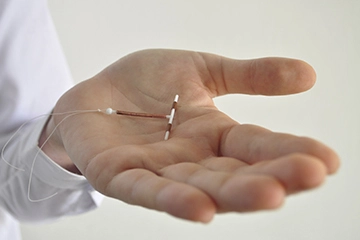How IUD-Based Birth Control Can Go Wrong for Women


Birth control gives women more freedom and choice in planning their pregnancies. Intrauterine devices (IUDs) are popular because they offer a long-term contraceptive option. Additionally, they are affordable, reversible, and effective. However, beneath the veneer of safety, there are unprecedented risks it poses to women. Although rare, complications can be medically challenging and may have dire outcomes in some cases.
Hormonal IUDs, for instance, are associated with several side effects, such as breast tenderness, uterine cramping, irregular bleeding, mood changes, and acne. For this reason, many women opt for Paragard, the only non-hormonal IUD available in the US. This product also has some side effects like heavy and painful periods. Whichever product you choose, these side effects are only the tip of the iceberg.
Women depending on IUDs to keep pregnancy at bay may face bigger risks and complications. In this article, we will highlight how this contraceptive can go wrong.
Contents
Insertion Challenges
The insertion process is the first potential hurdle women experience with IUDs. Although it is an outpatient procedure some women experience pain or discomfort during insertion. It often happens because the cervix can be sensitive. Additional factors such as anxiety, a tilted uterus, or a history of pelvic inflammatory disease can make the process more challenging.
According to Healthline, a dose of a nonsteroidal anti-inflammatory drug (NSAID) before the insertion can ease the experience. Your doctor may recommend an anti-anxiety medication or use local anesthesia to relieve anxiety and pain. Most importantly, the provider must be skilled and experienced to minimize the risk of complications.
Expulsion of the IUD
IUD expulsion is another possible complication women should know about. The device may partially or completely come out of the uterus due to various reasons. Research shows that exposure risk is higher for women who got IUDs within one year postpartum compared with non-postpartum. Women with heavy menstrual bleeding diagnosis could also experience higher expulsion rates.
Expulsion may happen shortly after insertion or at any point during the IUDs. Before opting for this contraceptive, you must research your risk factors. Also, ask your provider about the early signs of expulsion to seek medical attention sooner rather than later. These include an increase in bleeding or changes in menstrual patterns.
Perforation of the Uterus
Uterine perforation is a serious complication that occurs when the device punctures the uterine wall. While the incidence of perforation is 1 in 1000, the severity of the condition makes it disconcerting. A new study regarding this risk has led to more precise language in the federally-mandated warning manufacturers need to give in this context.
The Paragard lawsuit is an instance where women suffering from IUD complications have held the manufacturer responsible for failing to warn about the potential risks. Teva Pharmaceuticals, the manufacturer of Paragard, is facing numerous lawsuits. It may have to pay hefty compensation to victims suffering due to the complications caused by Paragard.
TorHoerman Law states that a majority of victims report the device perforating their uterus lining. Further, women having Paragard are at a higher risk of ectopic pregnancy compared to non-IUD users. While there is no current recall for the product, it is under close scrutiny.
Pelvic Inflammatory Disease (PID)
Medical News Today notes that women with IUDs are at a higher risk of developing pelvic inflammatory disease (PID). In most cases, it happens during the first weeks after IUD placement because the chances of bacteria invading the reproductive organs run high. However, the risk generally fades away three weeks after the placement.
Having a history of sexually transmitted infections or multiple sexual partners also elevates the risk of PID. Delayed treatment of pelvic infection can result in chronic pain, tubo-ovarian abscess, and infertility. The rate of ectopic pregnancies is 7.8% in women with PID compared with 1.3% in those without the condition.
Allergic Reactions
In rare cases, allergic reactions to the materials used in IUDs may surface. These result in symptoms such as rash, itching, or swelling. While these side effects are less serious and often diminish over time, they are often a concern for women opting for IUD-based birth control.
Watch out for any signs of discomfort and irritation and report them to your healthcare provider immediately. Also, communicate openly to address concerns and seek alternative contraceptive options if needed.
In conclusion, IUDs are an effective and reliable form of birth control but have a fair share of risks and complications. You must acknowledge these concerns before committing to the long-term use of an IUD as your go-to contraceptive alternative. Awareness can help you make an informed choice and seek help at the earliest when necessary.
Read Also Health Benefits Of Palmitoylethanolamide





